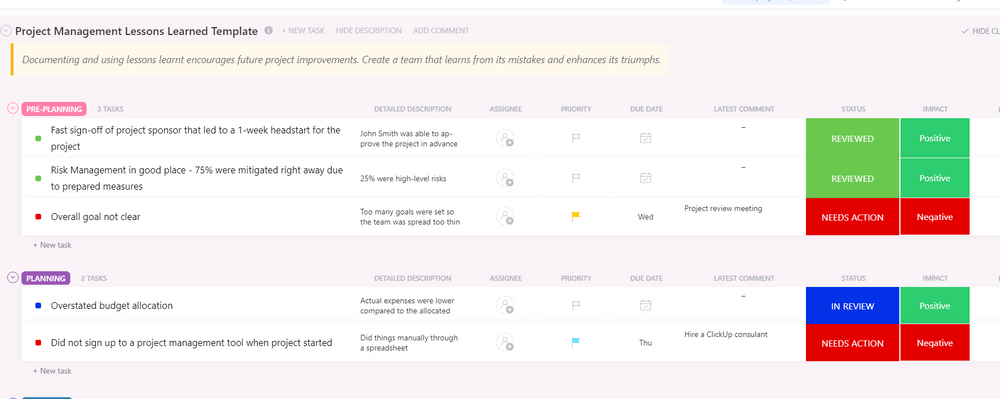

If someone asked you what makes a good leader, the usual answer would be vision, expertise, energy, people skills, experience, and other attributes. While these are definitely crucial skills for a leader, there is one that isn’t mentioned as often. However, it is the one that becomes very apparent when a company faces tough times.
When times are tough, what can help us sail through?
The answer is crisis leadership. This emergent leadership strategy is all about the essential skills and qualities that help a leader navigate their team through unexpected challenges and tough situations. And true leadership is defined only in crisis.
Let’s examine these skills in more detail and see how they play a significant role ensuring organizational success despite crises. However, before we understand the effective strategies for crisis management and how leaders navigate these situations, let us understand what a crisis is all about.
What is Crisis Leadership?
A crisis is any event or situation that disrupts an organization’s normal operations. It can be minor, like a crucial resource being unavailable during an important customer meeting, or completely unexpected major events, like natural disasters, disease outbreaks, or political developments that can throw well-planned strategies off track. These events directly impact your company’s priorities, reputation, or operations.
Crisis leadership is the ability of an organization and its leadership team to navigate challenging situations. It’s about maintaining stability, making sound decisions under pressure, and showing resilience in the face of adversity. An effective crisis leader’s management style inspires confidence, fosters clear communication, and steers the team toward a successful resolution.
This leadership style isn’t confined to CEOs or senior leaders but defines how the entire organization operates in tough times. For example, it could be the department head creating a contingency plan to manage a product recall, a social media manager addressing a negative comment, or similar issues that can derail your plans. Regardless of their position, crisis leadership empowers individuals to take charge, mitigate damage, and lead their teams through the storm.
Importance of Crisis Leadership
Crisis or unexpected challenges are inevitable, be it an internal issue, external event, or unforeseen natural disaster. Effective leaders need to respond swiftly and manage a crisis situation with great care since it can help to:
- Minimize negative impacts: A well-executed crisis response contains the initial damage and also prevents the crisis from escalating. It safeguards brand reputation, customer trust, and employee morale and also prepares the next generation for uncertainty
- Foster team resilience: A crisis can deeply unsettle a team. Crisis leadership provides direction, fosters a sense of calm, and motivates team members to work together effectively. This strengthens team spirit and allows them to bounce back stronger
- Improve decision-making: Crisis leadership empowers leaders to gather and analyze information and make informed choices that prioritize the long-term well-being of the organization
- Maintain public image: Crisis communication is key to regaining lost faith. A leader who communicates transparently and addresses concerns effectively can mitigate negative publicity and maintain a positive public image
Types of Crisis Management
Crises come in all shapes and sizes. But overall, they can be categorized under three key categories:
Internal crisis
Internal crisis is when a situation comes up due to an internal factor within the organization, such as employees, operations, or company culture. Some examples include:
- Employee misconduct or unethical behavior that can trigger negative sentiment or uncertainty in the workplace
- Workplace conflicts between teams or leaders that disrupt overall productivity and team morale
- Sudden leadership or management changes leading to a feeling of insecurity and concern within teams
Effective leadership strategies in these situations involve open communication and transparency, to keep up overall team morale and efficiency.
External crisis
An external crisis is a situation outside organizational control and has a direct impact on operations and team productivity. This includes:
- Economic crisis or financial downturn that makes employees frustrated or uncertain and companies cautious about spending or appraisals
- Public relations nightmares like a negative headline, a drop in company ratings, or a social media blunder that damages a company’s reputation
- Changes to regulations or new laws that have a direct impact on business practices and operations
- Supply chain disruptions due to events outside the company’s control and related to developments in other areas
Since external crises are difficult to anticipate and control, crisis leadership is about managing this situation effectively and dictating how the organization operates in these difficult circumstances.
Natural disasters
Natural disasters are unforeseen events with the potential to cause widespread disruption and damage. While not always directly caused by human actions, they can be considered a crisis situation requiring effective leadership. These include:
- Pandemic and outbreak of disease, similar to the COVID-19 global pandemic
- Floods, earthquakes, wildfires, or other events that cause major disruption at a workplace or its business operations
These situations are often beyond our direct control, requiring organizations to have a crisis management strategy in place. This can help prepare leaders and the team’s understanding of what needs to be done in crisis mode.
10 Crisis Leadership Skills & Strategies
Now that we know what a crisis situation looks like, here are some strategies that leaders can use to manage it head-on:
1. Early recognition of a crisis
For many organizations, crisis response often occurs when it is already too late. Crisis situations demand quick yet informed choices. Even if the crisis occurs gradually, leaders need to gather relevant information, analyze options, and make decisions under pressure, emphasizing the importance of their role in the process.
For example, if new financial regulations increase taxes on a particular commodity, projects using this commodity will be hampered. Here, the leadership team needs to act as soon as they find out about the new regulation. They must quickly determine how this new regulation will impact their client budget and communicate proactively with the customer. Any delays can derail projects or lead to hiccups at a later stage.
Pro Tip: Stay on top of things and catch early signs of problems with ClickUp. ClickUp Dashboards keep you aware of all the necessary business metrics in real time. You can also use the AI assistant ClickUp Brain to trawl through data, generate insights, and automatically send you updates as needed
2. Transparent communication
Transparency and open communication are essential in trying times to ensure that all parties involved are aware. Unfortunately, most leaders tend to communicate messages in silos, leading to misinformation or the core message getting lost in translation.

Pro Tip: Ensuring clear and effective communication is not easy, but with an all-in-one project and productivity management tool like ClickUp, it can be streamlined to some extent. With ClickUp Chat View, you can collaborate with your cross-functional teams in real time, getting all your conversations and chats under one platform. Thus, from company-wide updates to chatting with specific team members on a particular project, you can access it all in one view, helping build transparency and ensuring clear communication.
3. Keeping your cool under pressure
Crisis situations are inherently stressful, not just for direct stakeholders or leaders but even for overall team members. So, in crisis situations, effective leaders need to remain calm and composed, projecting a sense of control amidst the chaos. This instills confidence in the team and encourages others to stay focused on solutions rather than making impulsive decisions.
4. Effective delegation
A key step in crisis management is effective delegation. This ensures that the right team members or leadership handle particular issues based on their strengths, availability, and competency. To delegate effectively in a crisis situation, organizations need to:
- Identify strengths: Recognize the expertise and skills within your team and delegate tasks accordingly
- Provide clear instructions: Make sure the stakeholders all understand their roles and responsibilities
- Empowerment and support: Offer guidance and support to team members as they tackle delegated tasks, including resources, references, or relevant documentation

Pro Tip: For effective delegation, you can use ClickUp Tasks to assign tasks or subtasks within a project and add watchers who will stay informed of progress.
You can then visualize all tasks in multiple views. So when you assign tasks, you know exactly how many are allocated to each team, allowing them to manage timelines or reprioritize based on priorities.
5. Adaptability
Most crisis situations are beyond our direct control, requiring crisis leadership to be adaptable and ready to evolve. Adaptable leaders can assess changing circumstances, modify approaches as needed, and remain flexible in their decision-making. The characteristics of an adaptable leader include:
- Open-mindedness: Be receptive to new information and emerging challenges. Rigidly clinging to initial plans can hinder effective crisis response
- Contingency planning: Develop backup plans to address potential unforeseen circumstances. While you can’t predict every twist, having contingencies in place allows for a faster pivot when needed
- Ability to embrace change: Acknowledge that change is an inevitable part of a crisis. Leaders who are prepared to adapt can maintain team focus and move forward despite unforeseen obstacles, fostering a sense of resilience and preparedness
6. Empathy
A crisis can take an emotional toll on team members. Thus, crisis leadership requires you to demonstrate empathy, acknowledge these anxieties, and offer support, including:
- Acknowledging emotions: Validate the feelings of your team and recognize that a crisis can be unsettling
- Offering support: Provide resources and support mechanisms to help team members cope with stress and anxiety
- Practicing open communication: Encourage open communication about concerns and create a safe space for people to express their feelings
7. Problem-solving
Effective crisis leadership hinges on identifying problems, analyzing root causes, and creating solutions that address the situation effectively. This requires crisis leaders to follow practices like:
- Critical thinking: Analyze the situation objectively, gather relevant data, and identify the core issues at play
- Creative solutions: Don’t be afraid to explore unconventional approaches. Brainstorming with your team can help uncover innovative solutions that may not have been considered initially
- Evaluation and refinement: Evaluate the effectiveness of implemented solutions and be prepared to refine them as needed. Be open to feedback and tweak your approach based on ongoing developments
Pro Tip: Use ClickUp Whiteboards and Mindmaps to solve problems as a team, brainstorming ideas and working out next steps together
With the Leadership Meeting Agenda by ClickUp Template, you can clearly see your organization’s challenges and manage crises efficiently. The agenda includes topics for highlighting achievements, future milestones, potential roadblocks, staff updates, and other important points that help you manage leadership meetings effectively and make them more productive.
8. Learning from experience
No leader is perfect, and crises offer valuable learning opportunities. Leaders who take the time to analyze past experiences can strengthen their crisis management skills for the future. This includes:
- Conducting post-crisis analysis: Gather feedback from the team, analyze the effectiveness of implemented strategies, and identify areas for improvement
- Identifying areas for improvement: Identify areas where leadership approaches or team protocols can be strengthened based on the analysis
- Refining crisis management plans: Update existing crisis management plans to reflect the lessons learned and incorporate new strategies for future scenarios
Pro Tip: Gathering feedback from teams and stakeholders is easy with customizable ClickUp Forms. You can send them out at a click, analyze the findings in one place, and quickly convert actionable points into tasks
9. Strategic thinking
While navigating the immediate challenges of a crisis is crucial, effective leaders also maintain a long-term perspective. Strategic thinking ensures actions taken today pave the way for future recovery and growth, with a crisis management strategy ensuring:
- Vision for the future: Clearly define the desired outcome for the situation. Where do you want the team to be once the crisis is resolved?
- Risk management: Identify potential long-term ramifications of the crisis and develop strategies to mitigate future risks
- Learning and growth: View the crisis as an opportunity to learn and improve. Analyze what went well and what could be done better to enhance preparedness for future challenges
10. Active listening
Often, crucial answers on mitigating a crisis come from those directly involved and affected by the crisis. This involves team members or junior staff members who, unfortunately, are often not heard within the organization. An effective crisis leader focuses on active listening, ensuring that not just the senior leaders but even team members are heard and allowed to voice their concerns. This ensures individuals feel comfortable speaking up, sharing concerns, and admitting mistakes without fear of retribution, ensuring improved decision-making and crisis handling.
To foster active listening, leaders should:
- Create a collaborative culture: Provide an environment where all team members feel free to voice their concerns and share ideas in order to promote open communication
- Boost morale: Acknowledge and commemorate collective accomplishments, regardless of size, to sustain spirits and drive amidst challenging circumstances
- Create avenues for open feedback: Implement anonymous feedback options to ensure that team members can share their views and concerns without any fear of judgment
- Practice two-way communication: Ask questions and share insights, but also ensure that you give the team members the opportunity to voice their thoughts. When they do so, listen to understand and not to respond
Crisis Leadership Tools and Resources
Effective crisis leadership doesn’t happen in a vacuum; these skills can develop over time and with experience. Leaders have a variety of tools and resources at their disposal to enhance their response capabilities. These can include:
- Crisis communication plans: A well-defined plan outlining communication protocols for various crisis scenarios ensures a unified and consistent message reaches all stakeholders. This would include plans for specific scenarios, such as succession planning
- Media training: Training in media relations equips leaders to confidently and effectively communicate with the press during times of crisis
- Crisis management teams: Assembling a dedicated team with expertise in areas like public relations, legal matters, and human resources allows for a coordinated response effort
While several productivity and project management tools are available to mitigate crises, ClickUp is a powerful all-in-one alternative for effectively navigating challenging situations. It brings all your tools and discussions into a single platform, giving you a clear view of your organization’s tasks, resources, and knowledge base.

This allows you to manage crises more effectively using advanced features. ClickUp lets you take on essential crisis-management activities like:
- Assign and prioritize tasks, set deadlines, and ensure timelines are met using Clickup Tasks
- Add comments and attachments within tasks to facilitate real-time communication and easy access to information
- Track task completion rates and identify any potential roadblocks that require immediate attention using ClickUp Goals
- Facilitate real-time team discussions and brainstorming sessions using ClickUp Whiteboards, which also helps get inputs from the larger team
- Maintain a centralized record of all communication, ensuring no crucial details are lost with ClickUp Chat view
- Visualize the overall recovery roadmap, ensuring everyone understands the bigger picture using ClickUp Dashboards
- Automate repetitive and non-essential tasks using ClickUp Brain. The AI assistant allows you to write detailed instructions based on simple prompts, locate important files, and streamline workflows
Analysis of Crisis Management Techniques
Although many crisis and change leadership strategies can help us create crisis management protocols, some drawbacks need to be considered for effective action in challenging times. These include:
- Information overload: In a rush to keep everyone informed, leaders may unknowingly overwhelm stakeholders with excessive details, hindering their ability to react appropriately
- Decision paralysis: This common issue in crisis situations can lead to a lack of response or slow responses that can have a negative impact. Organizations must respond promptly and make the right decisions, as delays can exacerbate the crisis and lead to further complications
- Lack of transparency: Some leaders may withhold crucial information or sugarcoat the situation, leading to the team not understanding a crisis properly. This can lead to loss of faith if the teams do not trust what the management is communicating
- Failure to make crisis information easily accessible: Although some organizations have effective crisis mitigation and functions of management protocols, this documentation can be hard to locate, especially with crisis hits. To make sure all stakeholders can access these crucial documents, organizations must create and use a knowledge repository of learning from past crises
ClickUp Project Management Lessons Learned Template can be a valuable tool in addressing these drawbacks. By encouraging post-crisis analysis, leaders can:
- Identify areas where communication overload occurred: This allows for refining communication strategies to ensure clarity and focus on essential information during future crises
- Evaluate the effectiveness of transparency: Analyzing past situations can highlight the benefits of open communication and encourage leaders to prioritize transparency in future crisis management
- Learn from reactive tendencies: By reflecting on past responses, leaders can become more proactive, focusing on crisis preparedness and contingency planning
Pro Tip: Promote transparency in your organization by creating open-to-all knowledge bases and wikis covering everything from company vision and team OKRs to HR policies. ClickUp Docs is the best way to create these with rich text, links, version control, and collaborative editing. With access control, you can ensure that the documents are securely available to everybody in the organization
Crisis Leadership Examples
Although there have been several studies in the business world on how leadership can be well-prepared when responding to these challenges, it is only when crisis hits that a true leader is born. An example of such crisis leaders who have effectively steered their company through stormy waters include:
Arne Sorenson’s management of Marriott during the COVID-19 pandemic
The COVID-19 global pandemic directly impacted the hospitality industry due to a sudden stop in global travel. Marriott, the largest hotel chain globally, decided to respond with empathy in these challenging times.
CEO Arne Sorenson sent out a video message to all Marriott employees at this time, communicating the difficult decisions that the company would make but reassuring employees that Marriott would equally come out stronger. As he writes in his LinkedIn post,
Alan Mullaly’s transformation of loss-making Ford to a profitable business
When Alan Mullaly became CEO of the Ford Motor Company in 2006, the historic company was losing money, and its stock was tanking. Over the next eight years, Mullaly led Ford through one of the worst phases in global economic history. He slowly turned it around into a smaller, more unified, profitable business.
Mullaly transformed Ford with his ‘One Team’ approach, which focused on two things: collaboration and ownership and functional and technical excellence.
He created a simplified leadership structure, transparently shared plans for improving profitability, let go of unprofitable assets, and built up a culture of strict accountability.
Excel at Managing Crises with ClickUp
Navigating a crisis is about strong leadership and managing internal and external factors to navigate the murky situation. By honing the skills and strategies outlined above, you can become a leader who thrives under pressure and inspires resilience in your team.
Following effective crisis leadership practices is easier with ClickUp. It has a robust suite of crisis management and contingency planning features to help you navigate any challenging situation. By developing your crisis leadership skills and leveraging the power of this robust platform, you can transform turbulence into an opportunity for growth and lead your team toward a brighter future.
Sign up for free today and become the leader your team requires in challenging times!





